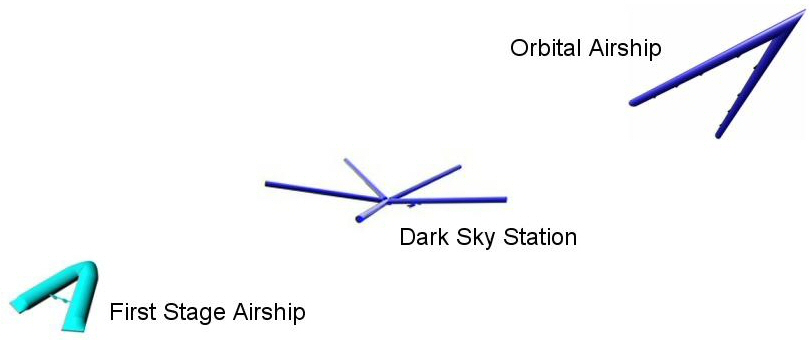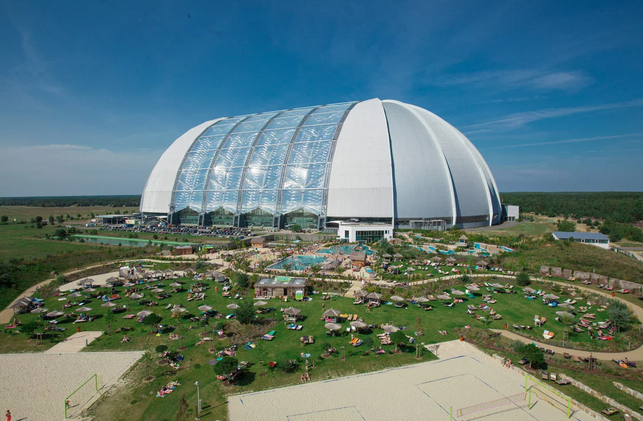- Joined
- 25 January 2020
- Messages
- 1,279
- Reaction score
- 1,948
Would would the benefits be of an airship in the modern world?
Would would the benefits be of an airship in the modern world?
You're welcomeThanks!








The futuristic superyacht concept that can fly as well as sail | CNN
Rome-based design company Lazzarini Design Studio has dreamed up an innovative new concept named Air Yacht that has the ability to "sail in the sky" as well as the ocean, and it looks every bit as outlandish as it sounds.edition.cnn.com
In the early 2000s, RAS started developing the ATLANT (“aerostatic flying transport vehicle of a new type”) hybrid, variable buoyancy cargo airship, primarily for applications in the harsh environment of the Arctic. RAS also was developing other advanced unmanned airship designs for long-duration surveillance roles. In 2018, the Israeli firm Atlas LTA Advanced Technology, Ltd. acquired RosAeroSystems, its product lines and intellectual property. Atlas moved the corporate headquarters to Yavne, Israel, and maintained subsidiaries in Russia and US.
Atlas has stated that its business goals include enhancing the ATLANT variable buoyancy airship technology and commercializing ATLANT heavy lift airships. In addition, Atlas is developing its own product lines of smaller electric-powered airships and specialized airships and aerostats for other missions. The Atlas website is here: https://atlas-lta.com. The RosAeroSystems website is still online at the following link: http://rosaerosystems.com The website supports the current Au-12 and Au-30 product line.
Across the services, there is an increasing demand for overhead communications capacity. New, lighter-than-air (LTA) vehicles that operate at very high altitudes have an obvious attraction for planners of surveillance and communication missions; the ability to see to a more distant horizon results in greatly expanded surveillance volumes. This report informs the U.S. Army about the usefulness and limitations of high-altitude airships (HAA) in the role of platforms for communications and surveillance suites in theater battlespace. Potential alternatives are solar-powered HAA and airplanes flying at 65,000 feet or above that can remain geostationary for months. Potentially, HAA may provide communications satellite capabilities for the WIN-T network that are less expensive than satellites and may support a Global Hawk-like surveillance package in the Multi-Sensor Command and Control Constellation (MC2C). HAA performance issues include engine power, envelope strength, and permeability, solar-cell power, fuel-cell capacity, weather, launch and recovery, and air defense survivability.



To absorb the excess wealth of billionaires who think they are Jules Verne.Would would the benefits be of an airship in the modern world?

JP aerospace?I remember long (at least 25 years) ago seeing an issue of a magazine associated with the NOAA featuring a cover and interior diagram of a massive triangular multi-role(including aerial boat/aircraft/sounding rocket/weather balloon launch platform and flying astronomical observatory) airship based on the 'flying deltoid pumpkin seed' design scheme, but for the life of me I've been unable to find that magazine and its images again.

The futuristic superyacht concept that can fly as well as sail | CNN
Rome-based design company Lazzarini Design Studio has dreamed up an innovative new concept named Air Yacht that has the ability to "sail in the sky" as well as the ocean, and it looks every bit as outlandish as it sounds.edition.cnn.com


Did it occur to them that LTAs need to have space for helium cells? They also perpetrated this. Terry Prachett readers might be amused.
The futuristic superyacht concept that can fly as well as sail | CNN
Rome-based design company Lazzarini Design Studio has dreamed up an innovative new concept named Air Yacht that has the ability to "sail in the sky" as well as the ocean, and it looks every bit as outlandish as it sounds.edition.cnn.com

Lazzarini reveals 150m airship-style superyacht concept powered by helium gas
Italian studio Lazzarini has unveiled a 150m flying superyacht concept powered by helium, named Air Yacht.www.boatinternational.com

 www.arch2o.com
www.arch2o.com

The futuristic superyacht concept that can fly as well as sail | CNN
Rome-based design company Lazzarini Design Studio has dreamed up an innovative new concept named Air Yacht that has the ability to "sail in the sky" as well as the ocean, and it looks every bit as outlandish as it sounds.edition.cnn.com

Lazzarini reveals 150m airship-style superyacht concept powered by helium gas
Italian studio Lazzarini has unveiled a 150m flying superyacht concept powered by helium, named Air Yacht.www.boatinternational.com
Constructed from carbon fiber, the enormous structure will be equipped with two blimps filled with compressed helium, enabling it to take to the skies at 60 knots for more than 48 hours a time "without emissions," according to the design team.
I’m more open to the concept of airship-FROM-orbit.Following up on my post from Monday, here's a link to JP Aerospace's website. Expect Optimistic figures, and excuse the early noughties graphics.
Airship to Orbit
www.jpaerospace.com
View attachment 687296


Ooh! That's New Zealand in in the thumbnail on the link. I could see my house from up there, except it's smaller than a pixel.These guys offer trips in a stratospheric balloon as of 2024. You can book your seats now



